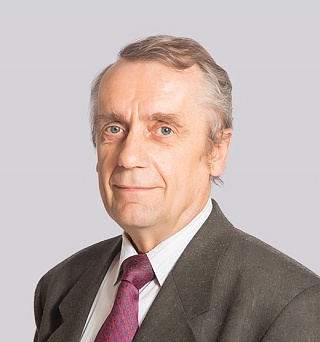Showing them the ropes
14 November 2017The Russian specialised IP court has recently revealed surprising knowledge in technical matters. The Russian patent office (Rospatent) examined a patent application for electromechanical conversion of energy and declined it, with the conclusion that it was yet another version of, perpetual motion machine.
This conclusion was made because the claimed method demonstrated the work of an object being a closed system, which should work using the internal energy of the system, but contradicts the law of conservation of energy.
The subject matter of the invention is an electrical capacitor whose charged conductive plates are movable. Electrostatic interaction takes place between the conductive plates producing resulting force, which is widely known in physics. The idea of the inventor was in that, if the conductive plates are movable (mutual rotational or alternating movement) the resulting force emerging as a result of electrostatic interaction of conductive plates will ensure the movement of those plates. Therefore, electrical energy produced by the electrical capacitor is transformed into mechanical movement of conductive plates of the capacitor.
Rospatent’s decision states that the claims do not contain features disclosing how the capacitor is charged with electric energy from outside source. The specification also lacks any information in this regard. For this reason, Rospatent concluded that the claimed invention does not meet the criteria of industrial applicability because it contradicts the fundamental law of nature of conservation of energy.
However, the inventor did not agree with the decision and appealed it at the IP court. The IP court examined the appeal and wisely noted that the absence of information on charging the capacitor from an external source of electrical energy in the patent application is only the defect of the patent application and not the intention of the inventor to create a perpetuum mobile. In the judgment at the IP court, it was noted that the inventor disclosed the invention, which explains that the conductive plates of the electrical capacitor should be used as a medium of conversion of electrical energy into mechanical energy, for example, the conductive plates will move as a result of electrostatic interaction between them.
The inventor did not propose to exclude the charging of the capacitor from the external source during operation of the capacitor. That only means that the inventor proceeded from the assumption that the capacitor should be charged as is generally accepted in the technical science. Therefore, the method claimed by the inventor does not contradict the law of conservation of energy and the invention satisfies the criteria of industrial applicability. The IP court cancelled the decision of Rospatent and ruled that the application should be examined by Rospatent again.
It should be noted that the IP court showed a high degree of professionalism not only in the field of law, but also in technical matters. Unlike examiners of Rospatent, who have technical background, the judges of IP court adequately evaluated the technical side of the invention and correctly assessed legal aspects of the case.
They correctly concluded that the missing information about the source of the energy is a shortcoming of the application and not the intention of the inventor to create a perpetuum mobile.
This is not an isolated case, where the IP court has showed a highly professional approach to solution of a problem, which would normally be regarded as one that should be solved by examiners of Rospatent having technical education.
An example of this is a conflict in connection with a utility model patent, which was appealed by an interested person and was invalidated by Rospatent.
The patent was granted with a claim that “a case of a device for disinfection of air containing a box-like structure forming an irradiation chamber with the inlet and outlet openings, the inner walls being fitted with a reflecting screen characterised by that the reflecting screen is provided with a metallised coating applied by a method of vacuum pulverisation”.
A patent for a utility model may only be granted for a device. Rospatent considered that the claimed utility model was different from the prior art, only by features referring to a method, and not to a device. As a result, Rospatent decided that the claimed utility model was not new and cancelled the patent. However, the relevant patent rules allow the use of features referring to a method to characterise a device.
The inventor then appealed Rospatent’s decision at the IP court. The court cancelled the decision of Rospatent and pointed out that it follows from the specification of the utility model where “the reflecting screen is provided with a metallised coating applied by a method of vacuum pulverisation” characterises the structural element of the device.
The applicant did not intend to patent a method of applying a pulverised coating as such known long before filing the application. The structural element, “the reflecting screen” made in the form of a metallised coating applied specifically by a method of vacuum pulverisation acquires certain characteristics, which achieve the sought technical result. Therefore, the feature characterises the structural element, for example, the reflecting screen, which is a feature referring to a device.
To add to this, it is important to point out that one of the judges of the IP court who took part in the examination of both cases had a technical background aside from legal education. Both cited cases show that the IP court is a highly competent body making it possible for the applicants to assert their rights in case of controversial situations.










